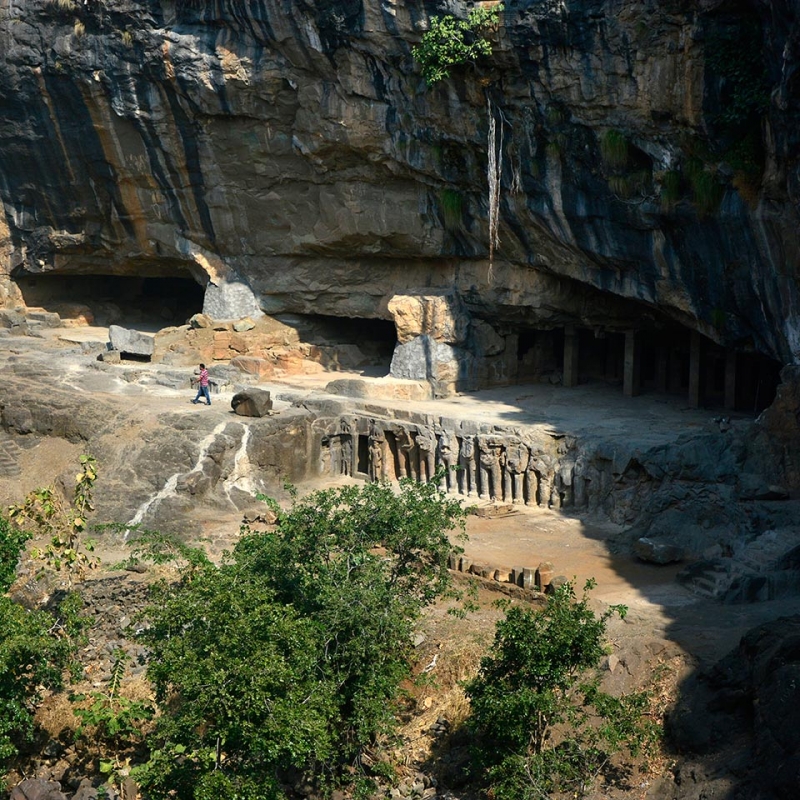
Pitalkhora Caves
Aurangabad, India
- Admire intricate carvings and sculptures
- Enjoy the scenic natural surroundings
- Explore ancient Buddhist rock-cut caves
- Learn about Buddhist history and art
- Photography of the cave architecture
Known for:
Description:
The Pitalkhora Caves, located near Aurangabad, Maharashtra, are an ancient Buddhist rock-cut cave complex dating back to the 3rd century BCE. These caves showcase a blend of Hinayana and Mahayana Buddhist art and architecture, offering a glimpse into the evolution of Buddhist practices in India. The complex consists of 14 caves, some of which feature intricate carvings, sculptures, and paintings. Although many of the caves are now in ruins, the remaining structures provide valuable insights into the artistic and religious traditions of the time. Visitors can explore chaityas (prayer halls) and viharas (monasteries), marveling at the ancient craftsmanship and the serene atmosphere that permeates the site. The caves are nestled amidst scenic hills, making it a tranquil and historically significant destination for tourists.
History:
The Pitalkhora Caves are among the earliest examples of rock-cut architecture in India, with some caves dating back to the Satavahana period (3rd century BCE to 3rd century CE). The caves served as a Buddhist monastic complex, providing shelter and a place of worship for monks. Over the centuries, the caves witnessed the influence of various Buddhist schools of thought, evident in the diverse artistic styles found within the complex. The site's decline began with the decline of Buddhism in the region. Neglect and natural elements took their toll, leading to the deterioration of many structures. Archaeological efforts have been undertaken to preserve and study the caves, revealing valuable information about the religious, artistic, and social history of ancient India. Today, the Pitalkhora Caves stand as a testament to the rich Buddhist heritage of the Deccan region.